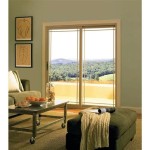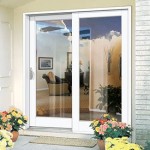12x12 Patio Covers: A Comprehensive Guide to Design, Materials, and Installation
A 12x12 patio cover represents a versatile and increasingly popular solution for enhancing outdoor living spaces. Offering a balance between providing adequate shade and seamlessly integrating with various architectural styles, these structures offer numerous benefits, from protecting individuals and outdoor furniture from the elements to increasing property value. Planning for, designing, and installing a 12x12 patio cover requires careful consideration of various factors. This article will explore these aspects in detail, providing a comprehensive guide for homeowners, contractors, and designers.
Key Point 1: Design Considerations and Structural Integrity
The design phase is crucial in ensuring a 12x12 patio cover meets both aesthetic and functional requirements. Numerous design options exist, ranging from simple, open-air structures to enclosed, screened-in spaces. The choice will depend on individual preferences, budget constraints, and local building codes.
A primary design consideration is the type of roof structure. Common options include flat roofs, gabled roofs, and pergola-style roofs. Flat roofs are generally the simplest and most cost-effective to construct. However, they require careful attention to drainage to prevent water accumulation, which can lead to structural damage over time. A slight slope is typically incorporated to facilitate water runoff.
Gabled roofs, characterized by their triangular shape, offer enhanced aesthetic appeal and improved water drainage. They also provide additional headroom, which can be beneficial if the patio cover is intended for use as an outdoor living area. However, gabled roofs are generally more complex and expensive to construct than flat roofs.
Pergola-style roofs, distinguished by their open lattice design, offer a balance between shade and sunlight. They are often constructed using wooden beams and can be customized with climbing plants to create a natural, aesthetically pleasing environment. While pergolas provide some shade, they do not offer complete protection from rain or sun, making them better suited for areas with moderate climates.
Beyond the roof structure, other design elements to consider include the placement of support posts, the overall height of the patio cover, and the integration of lighting and electrical outlets. Support posts should be strategically positioned to provide adequate structural support while minimizing obstruction of the patio area. The height of the patio cover should be sufficient to allow for comfortable movement and prevent a claustrophobic feel.
Structural integrity is paramount in ensuring the safety and longevity of a 12x12 patio cover. The structure must be able to withstand wind loads, snow loads, and other environmental factors specific to the geographic location. Consulting with a structural engineer is highly recommended, particularly for complex designs or areas prone to severe weather conditions. The engineer can perform load calculations and provide recommendations for appropriate materials and construction techniques.
Local building codes and permit requirements must also be carefully considered during the design phase. Building codes typically specify minimum requirements for structural integrity, fire safety, and accessibility. Obtaining the necessary permits is essential to avoid potential fines and delays. It is advisable to consult with local building officials to ensure compliance with all applicable regulations.
The foundation is a critical component of the patio cover's structural stability. Depending on the design and soil conditions, the foundation may consist of concrete footings, piers, or a continuous slab. The depth and size of the foundation should be determined based on the specific requirements of the structure and the load-bearing capacity of the soil. Proper drainage around the foundation is also essential to prevent water damage.
Consideration should also be given to the type of fasteners used to connect the various components of the patio cover. High-quality screws, bolts, and connectors should be used to ensure a secure and durable connection. Galvanized or stainless-steel fasteners are recommended to prevent corrosion.
Key Point 2: Material Selection and Durability
The choice of materials significantly impacts the appearance, durability, and cost of a 12x12 patio cover. Common materials include wood, aluminum, vinyl, and steel. Each material offers unique advantages and disadvantages, which should be carefully considered before making a selection.
Wood is a popular choice for patio covers due to its natural beauty and versatility. It can be easily shaped and customized to match various architectural styles. Common wood species used for patio covers include redwood, cedar, and pressure-treated lumber. Redwood and cedar are naturally resistant to decay and insects, making them ideal for outdoor applications. Pressure-treated lumber is chemically treated to resist decay and insects, making it a more affordable alternative.
However, wood requires regular maintenance to prevent weathering and decay. This includes periodic cleaning, staining, and sealing. Failure to properly maintain a wooden patio cover can result in rot, insect infestation, and structural damage. The cost of wood can also fluctuate significantly depending on the species and availability.
Aluminum is a lightweight and durable material that is highly resistant to corrosion. It requires minimal maintenance and can be easily painted or powder-coated to match any color scheme. Aluminum patio covers are typically more expensive than wood but offer a longer lifespan with less maintenance. Aluminum is also recyclable, making it an environmentally friendly option.
Vinyl is a low-maintenance material that is resistant to moisture, insects, and rot. It is available in a variety of colors and styles and does not require painting or staining. Vinyl patio covers are typically less expensive than aluminum but may not be as aesthetically pleasing to some homeowners. Vinyl can also be prone to fading or cracking over time, particularly in areas with extreme weather conditions.
Steel is a strong and durable material that is capable of withstanding high winds and heavy snow loads. Steel patio covers are typically more expensive than wood or vinyl but offer superior strength and longevity. Steel requires a protective coating, such as galvanization or powder coating, to prevent corrosion. Steel can also be more challenging to work with than other materials, requiring specialized tools and equipment.
In addition to the framing materials, consideration should be given to the roofing material. Common options include shingles, metal roofing, polycarbonate panels, and canvas. Shingles are a traditional roofing material that offers good insulation and weather protection. Metal roofing is durable and long-lasting but can be more expensive than shingles. Polycarbonate panels are lightweight and translucent, allowing for natural light to filter through. Canvas is a flexible and affordable option but may not be as durable as other materials.
The selection of materials should also take into account the overall aesthetic of the property. The patio cover should complement the existing architecture and landscaping. Consider the color, texture, and style of the materials to ensure a cohesive and visually appealing design.
Key Point 3: Installation Techniques and Best Practices
Proper installation is crucial to ensuring the stability, safety, and longevity of a 12x12 patio cover. Whether undertaking a DIY project or hiring a professional contractor, understanding the fundamental installation techniques and best practices is essential.
Before beginning the installation process, it is important to carefully review the design plans and ensure that all materials are on hand. Verify that the dimensions of the patio area are accurate and that the foundation is properly prepared. This includes ensuring that the ground is level and that the foundation is properly compacted.
The installation of the support posts is a critical step in the process. The posts should be set in concrete footings that are deep enough to provide adequate support for the structure. The depth of the footings will depend on the soil conditions and the size of the posts. It is important to ensure that the posts are plumb and that they are properly aligned. Using a level and a plumb bob can help ensure accurate alignment.
Once the support posts are in place, the frame can be constructed. The frame should be securely attached to the posts using appropriate fasteners. Ensure that all connections are tight and that the frame is square. Using a framing square can help ensure that corners are square.
The roofing material should be installed according to the manufacturer's instructions. Overlapping the roofing material appropriately to prevent leaks is important. Ensure that all fasteners are properly installed and that the roofing material is securely attached to the frame. If using shingles, apply an underlayment to protect the roof deck from moisture.
When installing electrical wiring for lighting or outlets, it is essential to follow all applicable electrical codes. Use weatherproof electrical boxes and fittings to protect the wiring from moisture. Consider hiring a qualified electrician to handle the electrical work to ensure safety and compliance.
After the installation is complete, the patio cover should be thoroughly inspected to ensure that all components are properly installed and that the structure is stable. Check for any loose connections, gaps, or other potential problems. Make any necessary adjustments or repairs before using the patio cover.
For DIY projects, possessing the necessary tools and equipment is crucial. This includes a saw, drill, level, plumb bob, measuring tape, and safety glasses. It is also important to have basic carpentry skills and a good understanding of construction techniques. If feeling uncomfortable with any aspect of the installation process, seeking the assistance of a professional contractor is advisable.
Professional contractors bring expertise and experience to the project, ensuring that the patio cover is installed correctly and safely. They can also handle complex design and installation challenges that may be beyond the capabilities of a DIY homeowner. When selecting a contractor, it is important to check their credentials, references, and insurance coverage. Obtain multiple bids from different contractors to compare pricing and services.
Proper maintenance is essential to prolong the life of a 12x12 patio cover. Regularly inspect the structure for signs of damage, such as cracks, rot, or corrosion. Clean the patio cover periodically to remove dirt, leaves, and other debris. Applying a sealant or stain to wooden patio covers can help protect them from weathering and decay. Promptly address any repairs or maintenance issues to prevent further damage.

Outsunny 12 Ft X 10 Grey Hardtop Gazebo Outdoor Polycarbonate Canopy Aluminum Frame Pergola 84c 215v01bk The Home Depot

Palram Canopia Olympia Patio Cover 3m X 5 46m Grey Clear One Garden

Outsunny 10x10 Hardtop Gazebo 84c 215

Outsunny 10 Ft X 12 Black Polycarbonate Hardtop Patio Gazebo With Double Tie Roof And Sidewall Nettings 84c 215v01 The Home Depot

Outsunny 12 Ft X 10 Grey Hardtop Gazebo Outdoor Polycarbonate Canopy Aluminum Frame Pergola 84c 215v01bk The Home Depot

Sobrado Na Avenida Sílvio Sciumbata Interlagos Em São Paulo Por R 2 000 Viva Real

Foxy Armchair Alboo Outdoor Furniture

Fazenda Sítio 215 M² Em Aracoiaba Da Serra Por R 480 000 Viva Real

12 215 Commissioners Road W London On N6j 1x9 House For Listing Id 40508325 Royal Lepage

Outdoor Living Space Remodel Birmingham Al 4 Reasons Why








